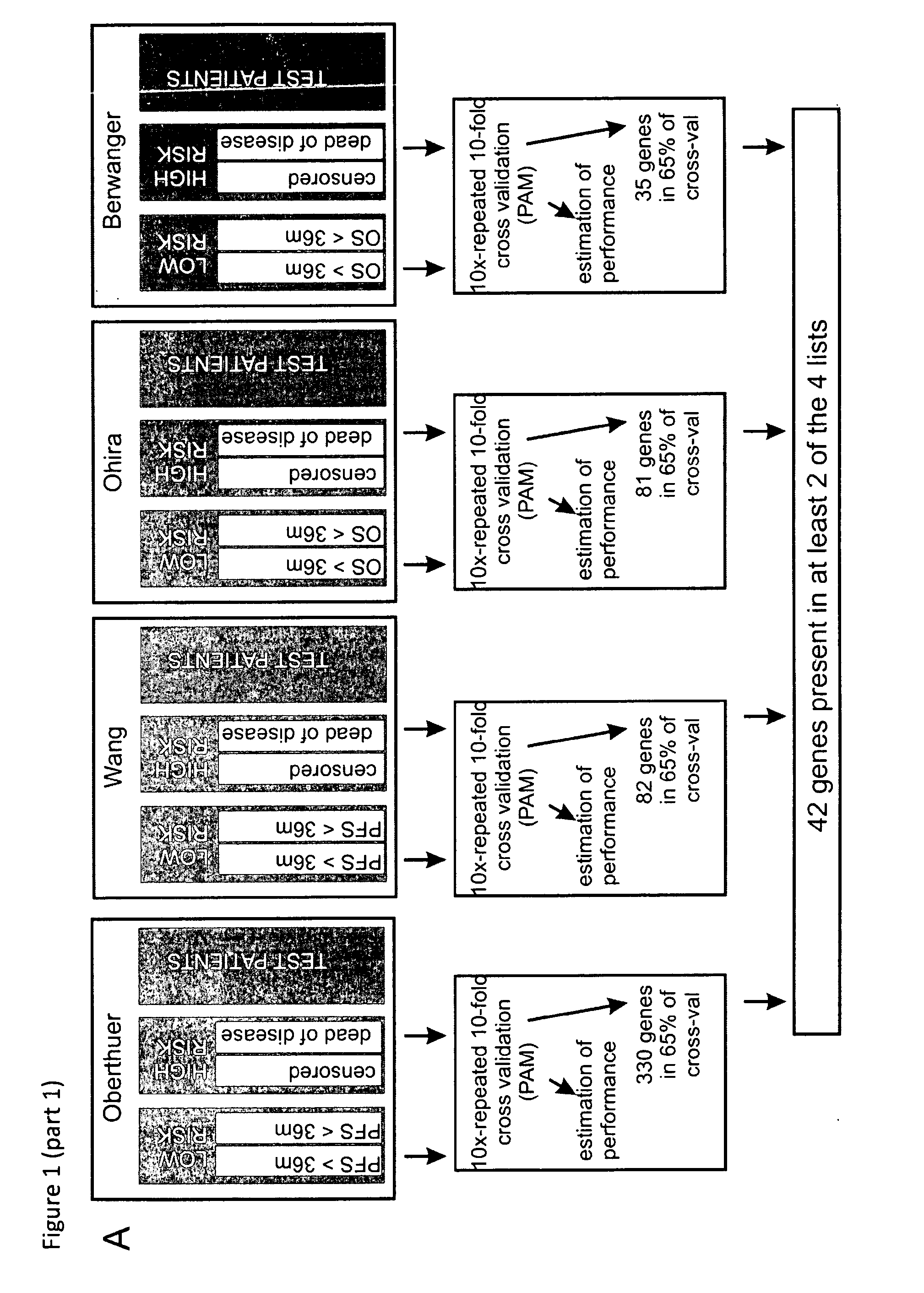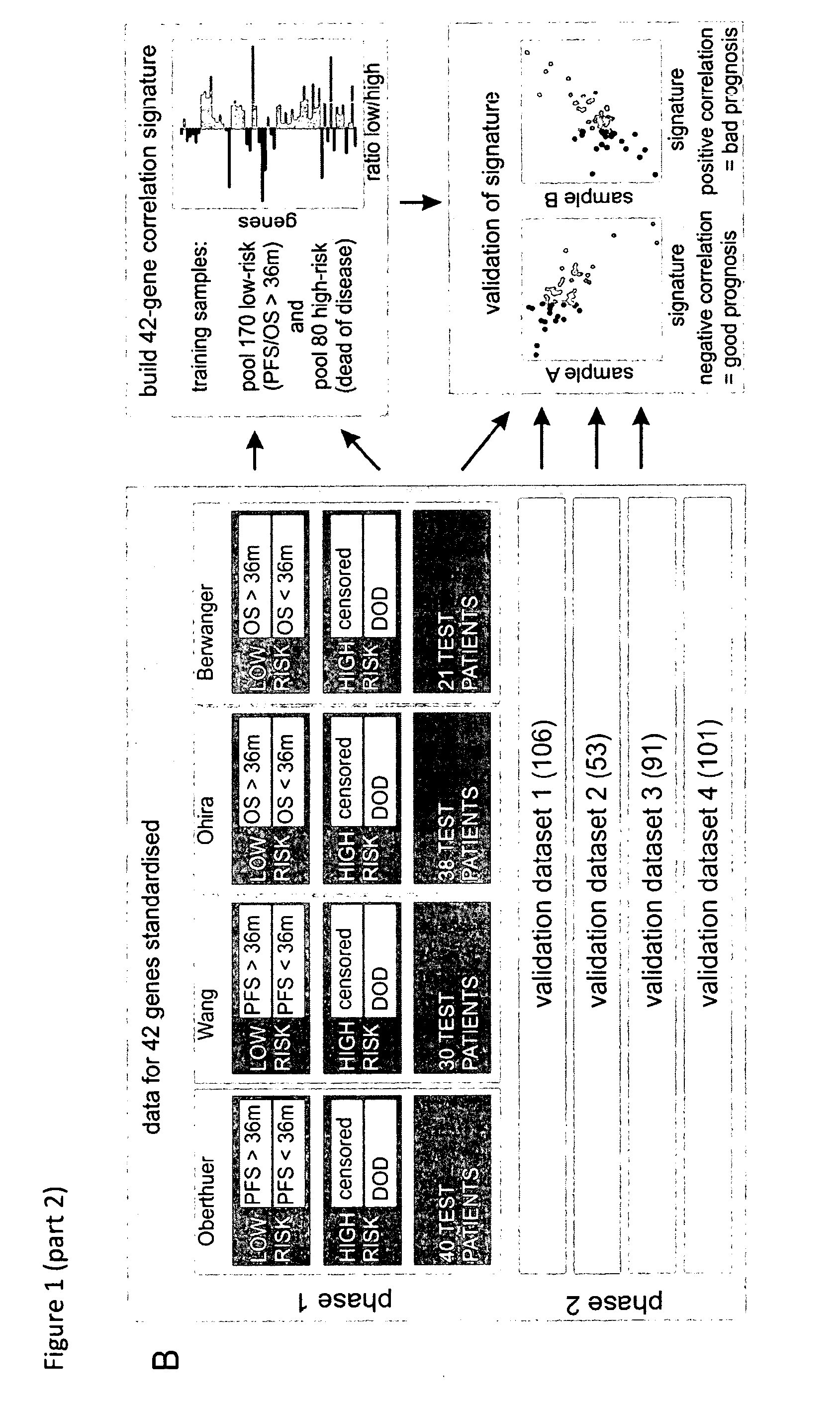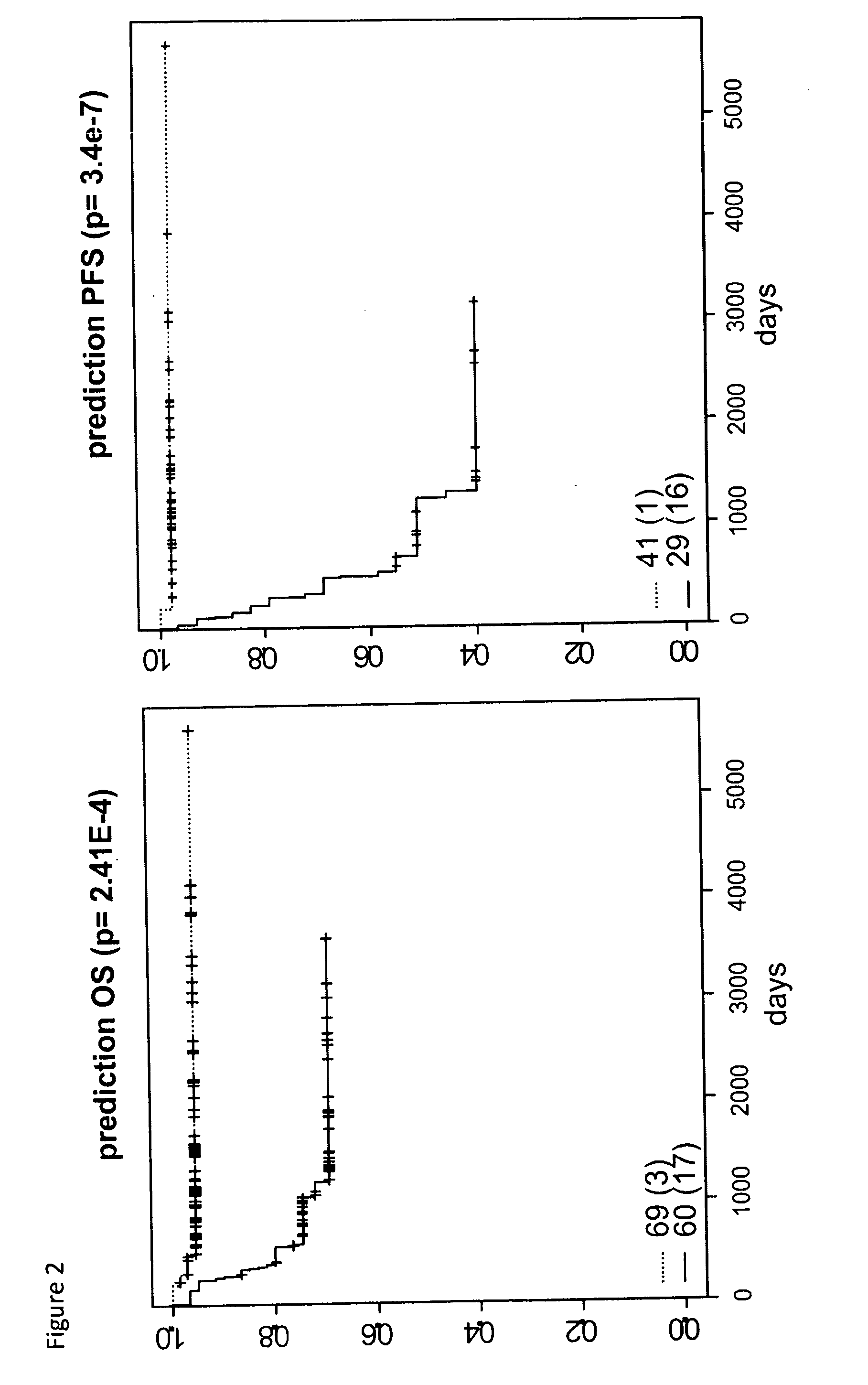Neuroblastoma prognostic multigene expression signature
a multi-gene, prognostic marker technology, applied in the field of medical diagnostics, can solve the problems of more intensive treatment, loss of valuable time prior to installing the required treatment, and inability to identify reliable prognostic markers or classifiers, and achieve the effect of accurately predicting the outcome of neuroblastoma patients
- Summary
- Abstract
- Description
- Claims
- Application Information
AI Technical Summary
Benefits of technology
Problems solved by technology
Method used
Image
Examples
example 1
Establishing a 42 Gene Classifier
[0209]In this study, we established a sensitive and specific prognostic 42-gene classifier for children with NB by re-analysis of four published gene expression studies from four different microarray platforms analyzing in total 582 patients (Oberthuer et al., J Clin Oncol. 2006 Nov. 1; 24(31):5070-8; Wang Q et al., Cancer Research 15; 66(12):6050-62 2006); Berwanger et al., Cancer Cell 2002, 2(5):377-386; Ohira et al., Cancer Cell. 2005 April; 7(4):337-50). In order to facilitate data comparison across different platforms, probe annotations were updated with respect to the original publications. When available, clinical follow-up information was updated. All these aspects critically contribute to the success of our multi-gene signature. Successful validation of the multi-gene signature in four independent unpublished datasets demonstrates its robust performance and platform independence.
Materials and Methods
Gene Expression Datasets
[0210]Four publish...
example 2
Establishing a 59 Gene Classifier for Neuroblastoma
Patients and Methods
Study Population
[0234]The initial cohort comprised 343 NB patients from the Society International Oncology Pediatric European Neuroblastoma (SIOPEN) from whose primary untreated NB tumor (at least 60% tumor cells) RNA was available and of sufficient quality. Almost all of the patients (n=324) were uniformly treated according to the SIOPEN protocols. The median follow-up was 55 months (range 1-143 months). Of the total group of 343 patients, 290 patients are alive
[0235]The validation cohort comprised 236 patients from the Children Oncology Group (COG)
[0236]This study was approved by the Ghent University Hospital Ethical Committee (EC2008 / 159).
RNA Extraction and Amplification
[0237]Total RNA extraction of NB tumor samples was performed in individual laboratories by silica gel-based membrane purification methods (RNeasy Mini kit or MicroRNeasy kit, Qiagen), by phenol-based (TRIzol reagent, Invitrogen or Tri Reagent p...
example 3
Reduction of the Gene List
[0256]In the complete 59 gene set, 12 genes were identified that had not previously been linked to neuroblastoma prognosis at all. The predictive power of the group of 12 genes was also tested (cf. Table 1, gene set “12”) and shown to have good prognostic power, but performs inferior to the best subsets (i.e. the 59 and 42 gene lists)
[0257]As indicated above already, the inventors identified also a 42 genes list and the genes overlapping in this 42 gene list and the 12 gene list, ie a 6 gene list was also evaluated for their predictive power. The performance of this smallest gene list of the invention is still reasonably good especially in view of its size, but does not perform as well as the longer lists such as the 12 gene list (cf. Table 1A, gene list “6”).
PUM
| Property | Measurement | Unit |
|---|---|---|
| Volume | aaaaa | aaaaa |
| Volume | aaaaa | aaaaa |
| Volume | aaaaa | aaaaa |
Abstract
Description
Claims
Application Information
 Login to View More
Login to View More - R&D
- Intellectual Property
- Life Sciences
- Materials
- Tech Scout
- Unparalleled Data Quality
- Higher Quality Content
- 60% Fewer Hallucinations
Browse by: Latest US Patents, China's latest patents, Technical Efficacy Thesaurus, Application Domain, Technology Topic, Popular Technical Reports.
© 2025 PatSnap. All rights reserved.Legal|Privacy policy|Modern Slavery Act Transparency Statement|Sitemap|About US| Contact US: help@patsnap.com



